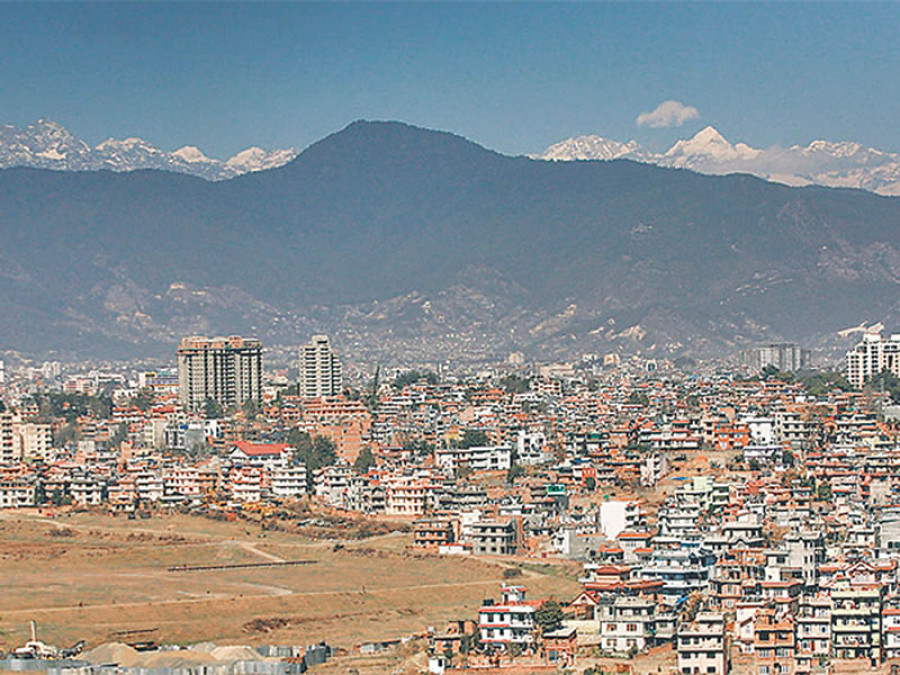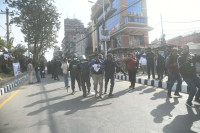Opinion
Development or dependency
Urbanisation and destruction of farmland is taking its toll on the Valley’s landscapes
Sweta Amatya Shrestha
The government has strongly emphasised infrastructure in its policies and programmes. Economic prosperity through the development of infrastructure has become the motto of the current government. However, knowingly or unknowingly, it is giving very little attention to the natural surroundings.
Turning agricultural land into a concrete jungle and living in big buildings with central AC instead of breathing natural air has become the norm for today’s society. The prevailing trend of living comfortably has become a magnet attracting people to urban areas. However, the natural essence of the suburbs and rural areas is missing in urban settings. While travelling from the city to a suburban or rural area and breathing in the fresh air, making one wonder if that really is development.
Nature and natural beauty used to be synonymous with Nepal. Images of its old landscapes have always given the impression of richness and self-reliance. Stretches of agricultural lands filled with vegetation and grain, forests and rivers have always been here from time immemorial. Gradually, improper allocation of land for factories and unplanned construction of private houses in the name of development started taking place. This created chaotic urban sprawl which has engulfed the awe inspiring natural beauty. This has been seen in most parts of the urbanised areas of the Kathmandu Valley.
The empty land around Bouddha of the good old days has been transformed into a concrete jungle. The white Bouddha stupa standing as a prominent landmark amid the greenery of the past now lies hemmed in by a mass of newly constructed urban structures. Acres of fertile land has been covered with permanent buildings. Due to an increase in the population, a growth in housing was inevitable. But it could have been developed at a sustainable pace which would have helped us to grow with nature and saved the land for future generations.
It is a bitter truth that haphazard development in Nepal is engulfing the natural beauty, which is indeed an essential asset of the country. In 1989, all major entry points for imports from India were closed. However, there was abundant agricultural land and Nepal was self-sufficient in food and basic needs. Hence, the embargo did not cause so much hardship. Again in 2015,India mounted an unofficial blockade, but this time Nepal suffered a severe scarcity of basic goods, cooking gas and vegetables.
Today, Nepal is dependent on neighbouring countries even for basic needs while it has abundant fertile land for agriculture. Yet the country is unable to cash in on that strength. The country is dependent on others for essential goods, but this is not because of lack of resources. Nepal is unable to provide for its citizens because of muddled use of natural assets and the destruction of agricultural land through haphazard urbanisation.
Fear rises in one’s heart while travelling from the Jagdol area in Jorpati after seeing urbanisation gradually spreading from Bouddha to the Sundarijal area and which will one day engulf the natural beauty of the area.
This is an example of what is happening across the country. As the people pursue modernisation, the agricultural way of life is being lost. Youngsters today are inclined towards competitive professions leaving behind farming, which is the backbone of national development. Development of agro businesses should be regarded as a basis for proper development. Farming should be considered as one of the most reputed professions, and the government should provide subsidies and encouragement to farmers. Only then will agriculture expand and result in more people taking up farming as a way of life. Along with the growing concept of smart cities, if agro farming and agro businesses could also be expanded, it could add fragrance to development.
Shrestha is an architect and a disaster risk management practitioner




 8.12°C Kathmandu
8.12°C Kathmandu










